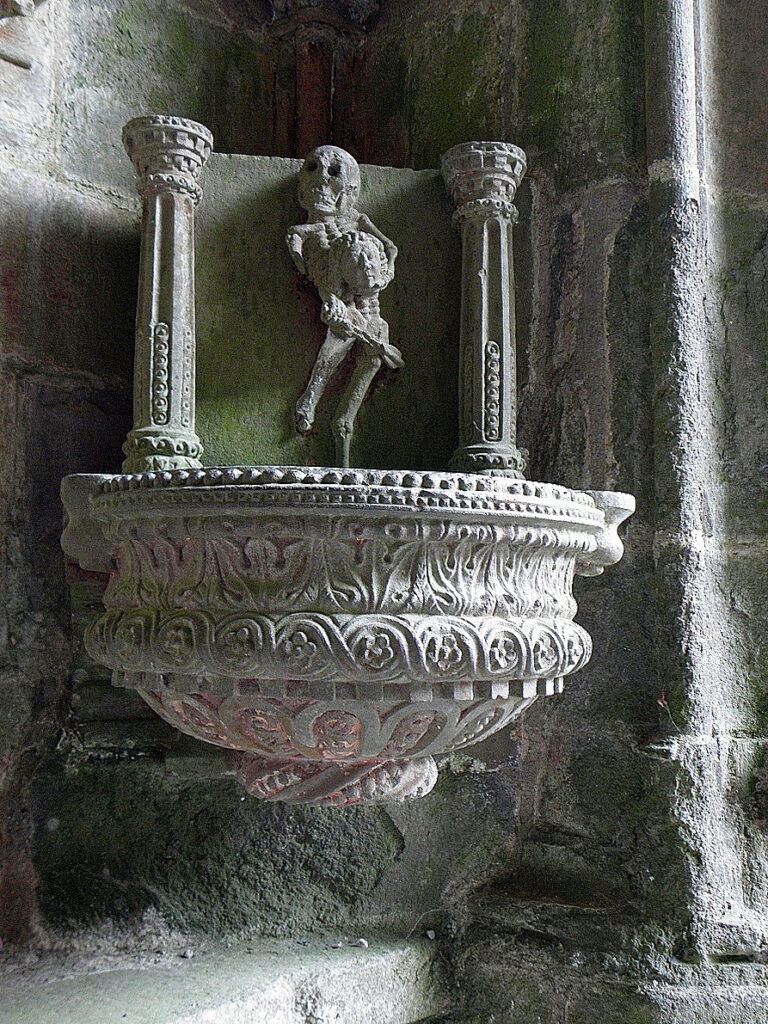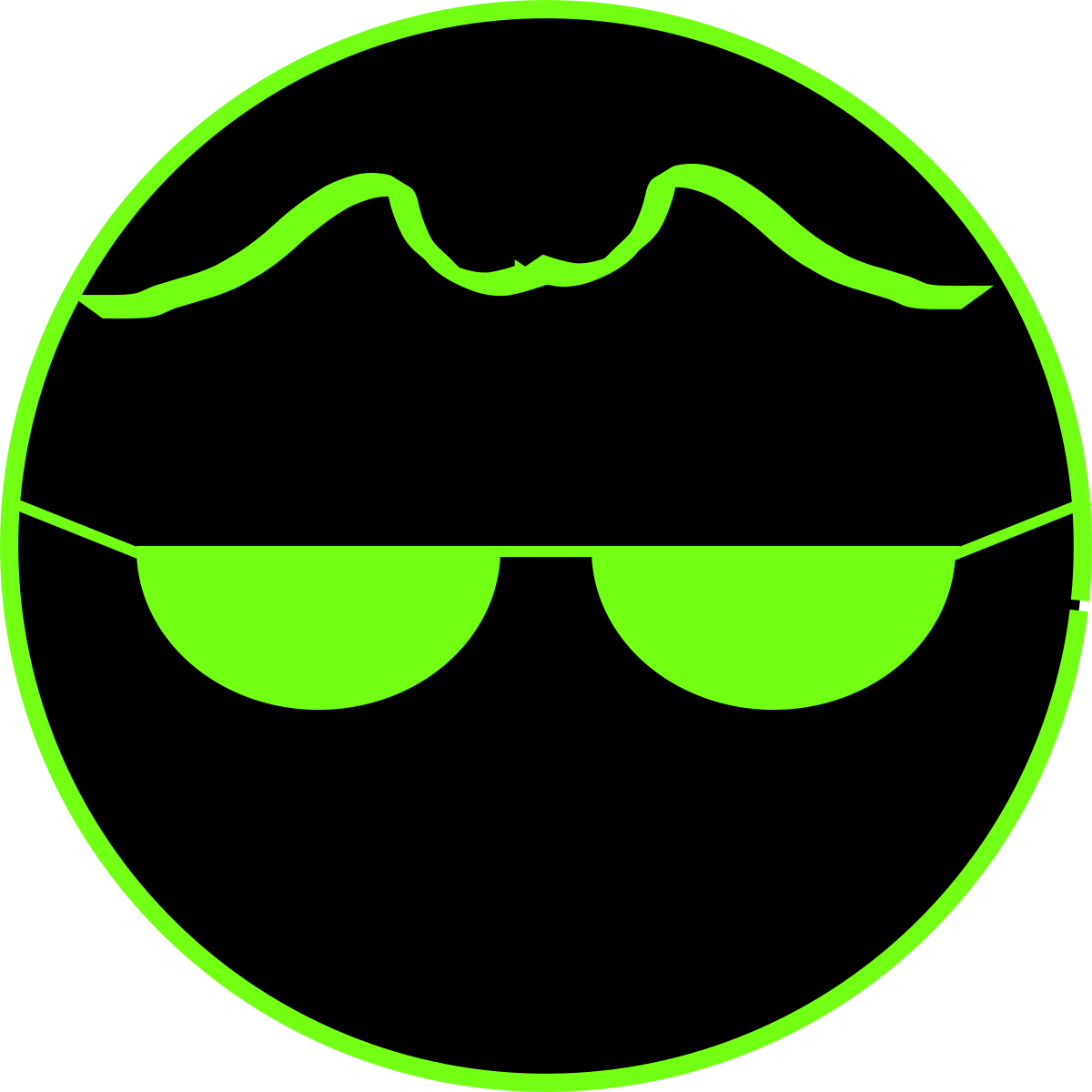One of the oldest surviving legends from the Brythonic world tells of a being called the Ankow. This is its Cornish name, the Normans and Bretons(Brittany) know it as Ankou. A skeletal figure that collects and guides the souls of the dead. It is often depicted wearing a wide brimmed hat and carrying a scythe. His dark cloak is often described as ragged and in Cornwall he pulls a large handcart whereas in Britany the Ankou rides a black coach pulled by black horses.
Its important to stress that this is nor a personification of death itself but a servant of death who is given the job of collecting and guiding the souls of the dead to whatever afterlife awaits them. The difference being that the Ankow has much more personality and can even be malicious.
One legend reports that three men were staggering home drunk in Helston and found a dishevelled old man pulling an old handcart near a bridge, lacking for better entertainment they started throwing rocks at the old man, one rock hitting the cart and breaking the axel. The three men moved on laughing however one man felt bad and returned to the stranger, he used a branch to replace the broken axel. The stranger never spoke to him and kept his head bowed, his face obscured by his wide brimmed hat on the dark night. The next morning the two men who left were found dead in their beds and the third, who turned back to help the stranger, found his jet black hair turned white over night.
Ankow can be found in grave yards, protecting the bodies of the newly dead from grave robbers. When on their rounds people can hear their cart rattling down the road in the still of night, he will occasionally knock on a door to summon a spirit from the house, a knock that sometimes the living can hear. Occasionally they will screech to summon the spirit which bares some similarity to the Irish Banshee, but that is the only similarity.
Both Cornish and Breton versions of this figure report that he is a sprit who was last to die in a year and takes up the duty of Ankow for the next year to ensure that all spirits from that parish make their way to the afterlife and don’t remain as ghosts. Once their term is over they are released and pass the mantle to a new spirit. A key difference is that in Cornish folklore the Ankow is almost always described as a male where as in Brittany its almost always a woman.
Side Note: Given these beings are described as gendered skeletons or heavily shrouded I would guess that only professional anatomists had seen the Ankow and survived.
Beings that lead spirits to the afterlife are known internationally as Psychopomp’s. They exist in the earliest written records of most cultures, and almost certainly predate writing considerably.
The Ankow is likely to be the origin of the Reaper image of the personification of Death which has emerged much more recently. Upon reflection a ghostly servant of death (as a concept) is a less of a stretch than an actual anthropomorphic personification of the concept of death itself.
Side Note: Whilst a number of academics have explored historical beliefs around death, none have explored Death (the personification) more than Terry Pratchett. Whilst its not frank academic analysis, if you don’t mind exploring themes and concepts in the abstract I highly recommend his book The Hogfather.
Interestingly the figure of the Ankow remained largely unchanged in the wake of Christianity. Given the Ankow isn’t a deity itself (unlike most psychopomps) its existence would not strictly be considered blasphemous. There are even churches in Cornwall, Wales and Brittany today where you can find small engravings or paintings depicting the Ankow. Whilst I have no problem seeing how this mythological figure has survived since at least 300 AD, I am surprised that like most Brythonic legends this one didn’t ever establish itself in England. You are more likely to find an Ankow in a graveyard in Toronto, Cape Town or Canberra than in London due to the great spread of Cornish miners to these places and away from Britain.

Side Note: Its absolutely bizarre seeing an image like this on a Baptismal Font.
I spent hours sifting through the web for stories and legends about Ankou and most of what I found was stories that were effectively angsty teenage goth fan-fiction. A number of historians have published books on death spirits that include at most a paragraph on the Ankou. The only legends appear almost entirely preserved in oral tradition. Codifying the old legends and stories before they are lost feels like a worthy project for someone.
In summary, don’t fear the Reaper, but I wouldn’t go out of your way to piss one off either.

Are there any other similar stories in other countries to compare?
Hi Soph,
Absolutely! A being that guides spirits into the afterlife is called a psychopomp. It would be remiss of me not to mention this name conjures several “my ex girlfriend” jokes.
In Christianity we call them Angels. Islam has Azrael who is a complete badass and on my list for his own post. The Norse had Valkyrie whereas the Japanese had spirits, who either were or took the form of foxes, called Kitsune. The Greeks mostly assigned the role to Gods depending on how important ypu were, most of us were likely to open the eyes of our soul to Hermes grinning features
I think seeing the transition from living to dead as a journey is quite natural and developing guides on that journey feels quite organic. I said in this post that I felt psychopomps made more sense than an actual anthropermorphised personification of Death. That may have been a little unfair as Gods of the underworld exist almost universally, we call them Cythonic Gods.